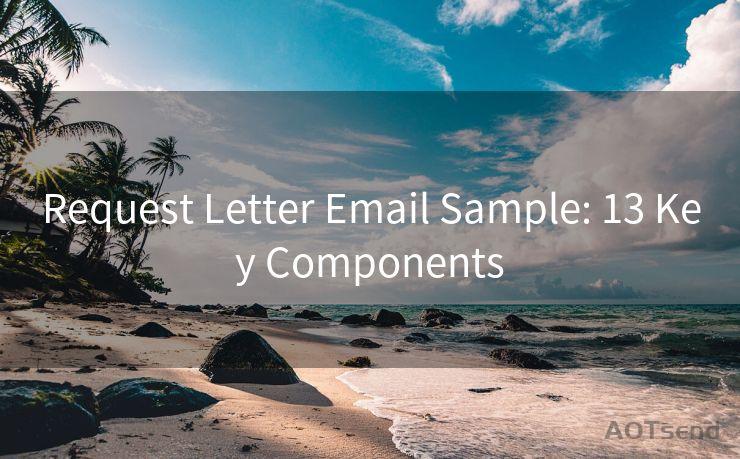Request Letter Email Sample: 13 Key Components




When it comes to formal communication, a request letter email plays a pivotal role. Whether you're seeking information, asking for assistance, or applying for something, crafting a well-structured and professional email is crucial. In this blog, we'll delve into the 13 key components that make a request letter email stand out and increase your chances of getting a positive response.
1. Clear Subject Line
The subject line is your first impression. It should be concise, direct, and reflect the purpose of your email. For example, "Request for Information Regarding Upcoming Conference."
2. Professional Greeting
Start with a formal greeting, addressing the recipient by their proper title and last name, such as "Dear Mr./Ms. [Last Name]."
3. Introduction
Briefly introduce yourself and your organization (if applicable). Mention how you found the recipient's contact information, especially if it was through a referral or mutual connection.

🔔🔔🔔
【AOTsend Email API】:AOTsend is a Managed Email Service for sending transactional emails. Support Email Types: reminders, authentication, confirmations, notifications, verification codes, invoices, password resets, account activations, billing statements, two-factor authentication (2FA), and one-time passwords (OTP) emails, etc. $0.28 per 1000 Emails. 99% Delivery, 98% Inbox Rate.
You might be interested in:
Why did we start the AOTsend project, Brand Story?
What is a Managed Email API, How it Works?
Best 25+ Email Marketing Platforms (Authority,Keywords&Traffic Comparison)
Best 24+ Email Marketing Service (Price, Pros&Cons Comparison)
Email APIs vs SMTP: How they Works, Any Difference?
4. Purpose of the Request
Clearly state the reason for your email. Whether you're inquiring about a service, requesting a quote, or seeking advice, be specific and to the point.
5. Relevant Background Information
Provide any necessary background information that supports your request. This could include previous interactions, project details, or specific circumstances that led to your inquiry.
6. Details of the Request
Outline the specifics of what you're asking for. If it's a product or service, include quantities, specifications, and any other pertinent details.
7. Timeline or Deadline
If there's a specific timeline or deadline associated with your request, mention it here. This helps the recipient understand the urgency and plan accordingly.
8. Anticipated Response or Action
Clarify what you expect from the recipient. Whether it's a confirmation, a quote, or further discussion, stating your expectations can streamline the communication process.
9. Additional Resources or Attachments
If you're attaching any documents or linking to external resources that support your request, mention them here.
10. Expression of Appreciation
A simple "thank you" or "I appreciate your time and consideration" goes a long way in fostering a positive relationship.
11. Call to Action
End your email with a clear call to action, such as "Please let me know if you require any further information" or "I look forward to your prompt response."
12. Professional Closing
Use a formal closing like "Sincerely," "Best regards," or "Respectfully," followed by your full name and contact information.
13. Proofreading and Formatting
Lastly, ensure your email is polished and professional by proofreading for grammar and spelling errors. Use proper formatting, including bullet points or numbered lists, to enhance readability.
By incorporating these 13 key components into your request letter email, you're setting yourself up for a successful and efficient communication experience. Remember, clarity and professionalism are paramount in any business communication, and a well-crafted email can make all the difference in getting the response you desire.




Scan the QR code to access on your mobile device.
Copyright notice: This article is published by AotSend. Reproduction requires attribution.
Article Link:https://www.mailwot.com/p1274.html



